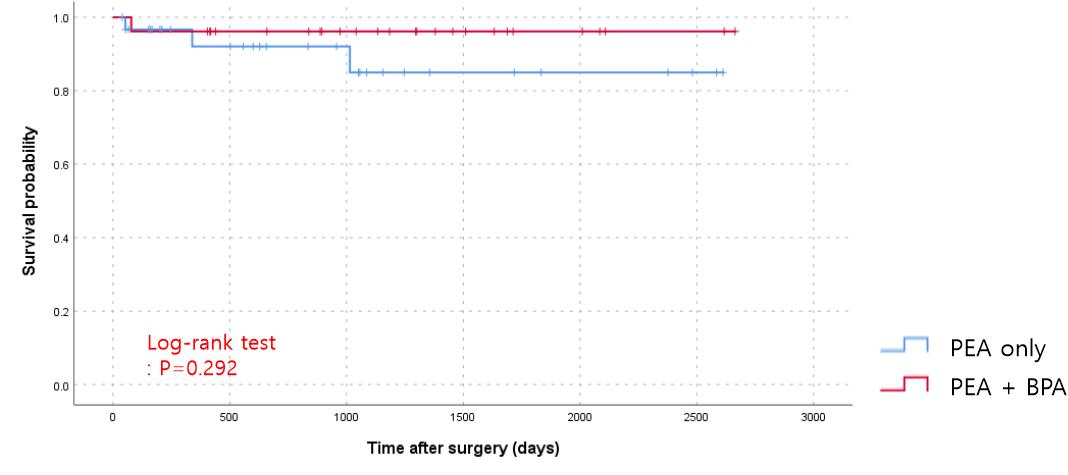초록접수 현황
| 21F-134 | 구연 발표 |
Updates: pulmonary endarterectomy for chronic thromboembolic pulmonary hypertension
Min Jung Ku, Dong Seop Jeong, Tae-Gook Jun, Wook Sung Kim, Kiick Sung, Ji-Hyuk Yang, Yang Hyun Cho and Suryeun Chung
Department of Thoracic and Cardiovascular Surgery , Samsung Medical Center, Sungkyunkwan University School of Medicine, Seoul, Republic of Korea
Purpose : Pulmonary endarterectomy (PEA) is a curative treatment method for the patients in chronic thromboembolic pulmonary hypertension (CTEPH). However, there are only few centers to perform the PEA due to technical and perioperative concerns. We aimed to introduce our center’s current perioperative management methods and post-operative outcomes of PEA and balloon angioplasty (BPA) after PEA.
Methods : From May 2014 to July 2021, 57 consecutive patients underwent PEA. Pulmonary angiosarcoma cases (n=3) were excluded. BPA was performed in patients who had residual stenosis after PEA (hybrid group, n=26).
Results : The mean age of the patients was 50.48 ± 16.26, and 33 patients (57.9%) were male. At follow-up, the 6 minute walking distances was improved to 464.33±104.18 m compared with baseline (375.79 ± 115.58 m, P <0.001). The postoperative right heart function and tricuspid regurgitation were significantly improved. (P <0.01) There was no early death. Estimated 3-year survival was **%. There was no difference in survival between PEA only and hybrid groups [Fig].
Conclusion : We found that PEA with or without BPA showed an excellent early and late clinical outcome. Multidisciplinary approach should be applied for patients with CTEPH.
Methods : From May 2014 to July 2021, 57 consecutive patients underwent PEA. Pulmonary angiosarcoma cases (n=3) were excluded. BPA was performed in patients who had residual stenosis after PEA (hybrid group, n=26).
Results : The mean age of the patients was 50.48 ± 16.26, and 33 patients (57.9%) were male. At follow-up, the 6 minute walking distances was improved to 464.33±104.18 m compared with baseline (375.79 ± 115.58 m, P <0.001). The postoperative right heart function and tricuspid regurgitation were significantly improved. (P <0.01) There was no early death. Estimated 3-year survival was **%. There was no difference in survival between PEA only and hybrid groups [Fig].
Conclusion : We found that PEA with or without BPA showed an excellent early and late clinical outcome. Multidisciplinary approach should be applied for patients with CTEPH.

책임저자: Dong Seop Jeong
Department of Thoracic and Cardiovascular Surgery, Samsung Medical Center, Sungkyunkwan University School of Medicine, Seoul, Republic of Korea
발표자: Min Jung Ku, E-mail : mj99cha@hanmail.net



